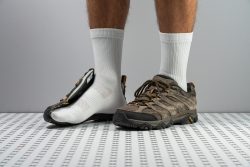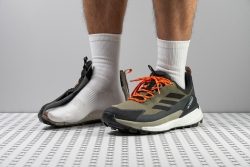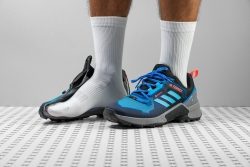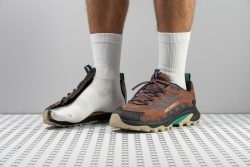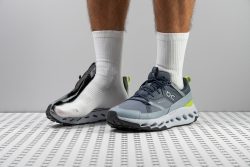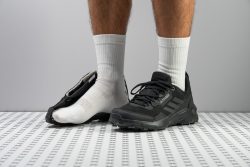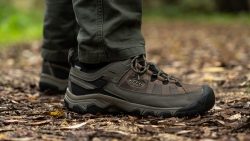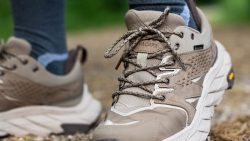7 Best Day Hiking Shoes in 2025
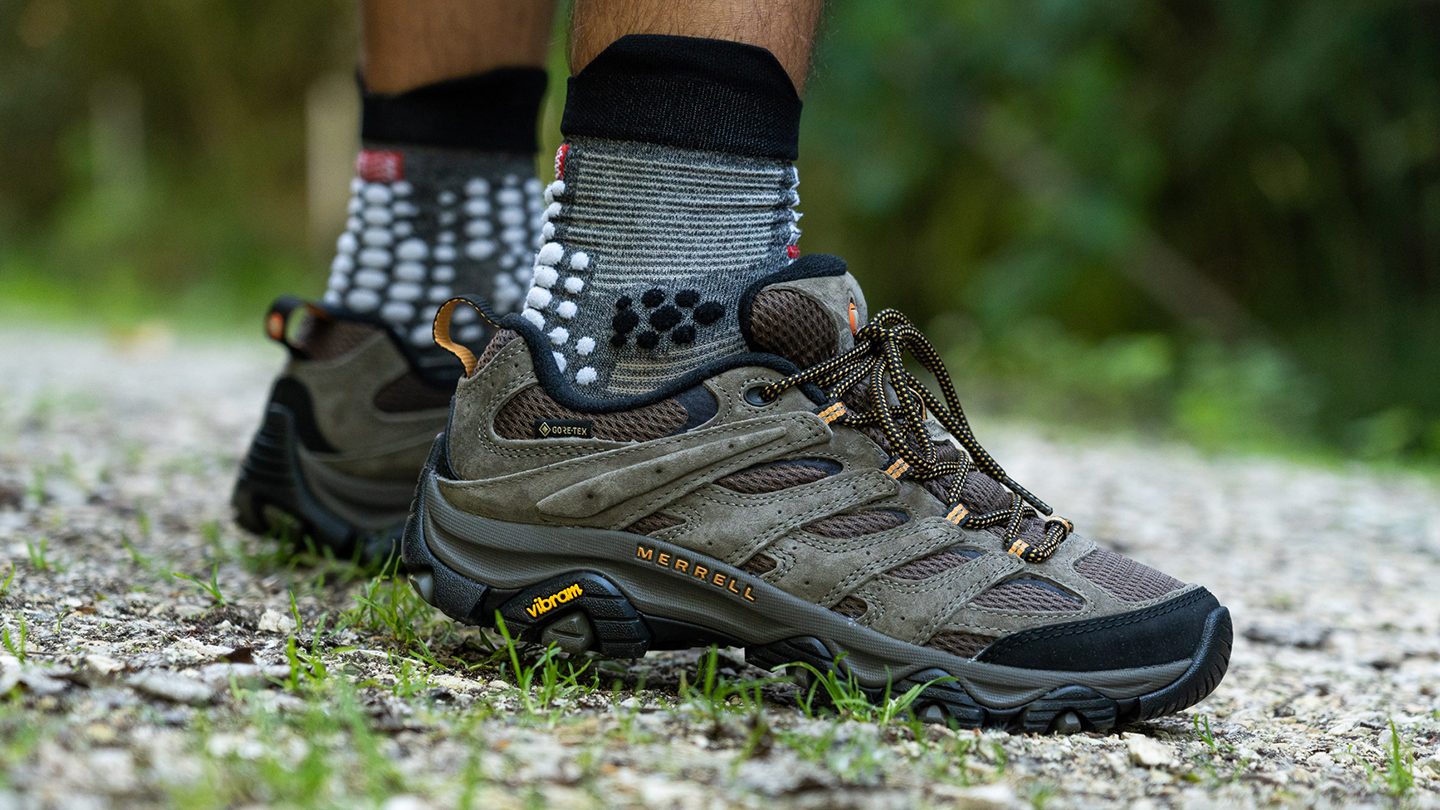
We buy shoes ourselves. We earn commissions when you buy through us, at no extra cost. Why trust us
We love day hiking! All you need is a comfortable shoe and a good trail route near you. Ill-fitting footwear can only ruin an otherwise great hike. It’s about time to get that great-fitting pair of day hiking shoes.
You need one that fits comfortably, protects your feet, and stabilises your ankles. This guide highlights the models we recommend best.
With hundreds of superb day-hiking options available in the market, picking the perfect pair can be time-consuming. To help you with that, we’ve tested day hiking shoes from a variety of brands during our hikes and in the lab. Check out our top picks in this article.
How we test day hiking shoes
Each day-hiking shoe listed here was thoroughly tested by us: during our hikes, where we covered various surfaces in different weather conditions in each pair, and inside our independent lab.
Our approach includes:
- Purchasing shoes for day hiking with our own money to ensure the 100% impartiality of all our reviews.
- Putting in the hours of testing the shoes in the field, determining the actual fit, grip, support, stability, waterproof technology, durability, and breathability. We subject the shoes further to tougher terrains, murky off-road paths, and inclement weather conditions.
- We cut the shoes in half in our lab and inspect every little detail, from shock absorption, insole thickness and tongue padding to ventilation holes and traction.
Best day hiking shoes overall



































What makes it the best?
A firm favourite for day hikers, the Merrell Moab 3 GTX is an exceptionally comfortable shoe from the get-go. Needing no break-in time, it is flexible and supportive, making it our top day hiking shoe in the lab.
With its exceptionally plush padding around the ankle and in the tongue, the Merrell Moab 3 GTX offers comfort from the first step. The tongue measures a staggering 14.6 mm thick, 4.4 mm thicker than average, and prevents the laces from biting into our instep.
The flexible midsole boasts a superbly natural ride as it flexes with our foot. In the lab, we bent the shoe to 30°, measuring 15.2N compared to the stiffer average of 18.3N. This extra flexibility delivers natural transitions and added comfort to our step.
For day hikes without heavy packs, we found the support in the Moab 3 GTX more than enough. The cushioning is a little firmer than average, as we found when we tested its shock absorption. Measuring a below-average 85 SA, our feet feel well-supported underfoot while still appreciating the comfort it affords. The stiff heel counter holds our heels snugly, along with a nylon shank in the midsole that provides stability. We manually assessed the heel counter as 4/5 for stiffness.
Such a solid, comfortable, and waterproof shoe has to pay the price somewhere - in the case of the Moab 3 GTX, it's in weight. At 15.9 oz (450g), it’s 18.9% heavier than average for hiking shoes. Hikers looking for a lightweight experience may want to look elsewhere.
Pros
- Superb day-one comfort
- Brilliant surface adhesion
- Supportive like a work shoe
- Remarkably durable
- A-grade waterproofing
- Sheds mud quite well
- Protective toe box
- Incredible overall quality
- Incredible overall quality
Cons
- Heavy for a low-top
- Subpar breathability
- Its shoelaces unravel often
- Minimal shock absorption
Day hiking shoes with the best shock absorption
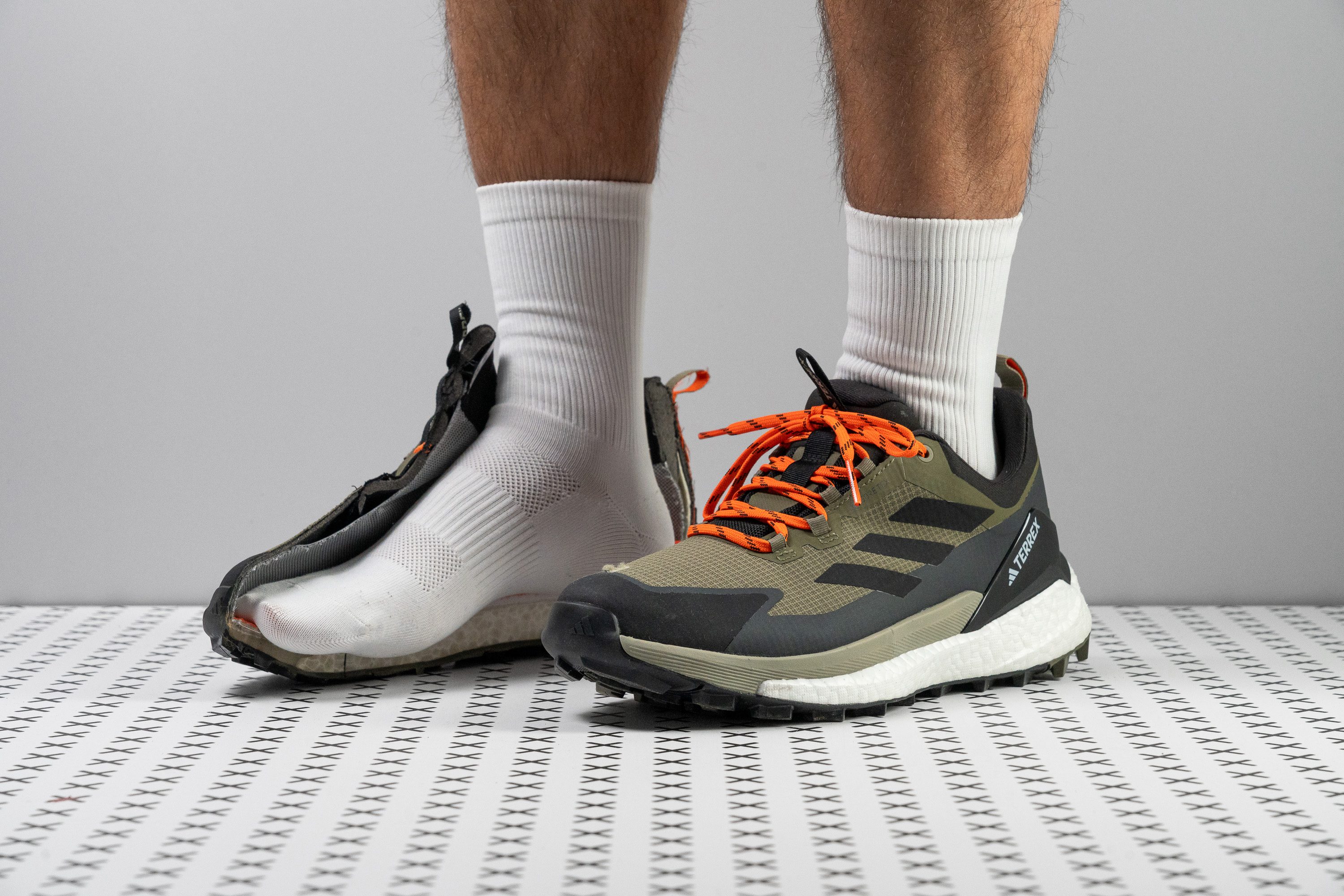



















































What makes it the best?
Through lab tests and trail experience, we crowned the Adidas Terrex Free Hiker 2.0 Low GTX as the best shock-absorbing day hiking shoe. With a highly-cushioned sensation, we cruised comfortably for hours. It offers a steady experience with its broad and grippy base while maintaining a forgiving ride through its flexible midsole.
Designed with maximum cushioning, we could hike much further than usual. The substantial 37.2/24.6 mm stack isolated us from harsh debris and ground impact underneath. Its shock absorption is impressively high at 126 SA, 20.0% more than average—making the ride extra protective!
While cushioning tends to sacrifice stability, this shoe covers the issue with its massive base—113.9 mm in the forefoot and 93.1 mm in the heel—providing exceptional support and sure-footedness. Even as we tackled rocky terrains, it felt impossible to topple over with such a generous platform.
Additionally, the mix of aggressive 6.7 mm lugs in the heel and 3.6 mm lugs in other areas is so grippy that we never had problems with slipping.
To maintain an effortless sensation, the midsole stays forgiving. Needing only 17.8N to reach 30 degrees in our bend test, this shoe allows for more foot flexion than average so that we can grip the ground during inclined segments.
However, its aggressive tread is an overkill for easy routes. Those passing through manicured trails should go for a lighter hiking shoe.
Pros
- Well-cushioned and responsive
- A tonne of impact protection
- Rockered sole makes the ride smoother
- Barely gets firmer in low temperatures
- Excellent support and side-to-side stability
- Top-notch waterproofing
- Highly durable (especially the outsole)
- Ideal grip for technical terrain
- Sustainable materials (20%)
Cons
- Much heavier than average
- TPU heel clips may cause rubbing
Day hiking shoes with the best stability















































What makes it the best?
When testing this shoe, our day hikes were rather long and over a demanding terrain; usually 15+ miles long and we used some well-maintained trails as well as some... ok, we improvised. Because of this, this shoe has seen the best and the worst outdoors have to offer. And still, it was as stable as a hiking shoe can be. That's why Swift R3 GTX is our #1 picks when it comes to stability in day hiking shoes.
We rarely see this many stability elements in a hiking shoe: lateral stability is perfect which means no wobbliness, torsional rigidity was rated as 5 out of 5 (5 being the stiffest), the midsole is wider than the average both at the heel and the forefoot which ensured stable and planted landings, the stiffness of the heel counter got a 4 out of 5 rating, which means no unwanted ankle movements. As if all of these weren't enough, we could also feel the Pro-Moderator technology which prevents side-to-side movements of the feet.
All of these stability features might sound like overkill but, in reality, what we felt was just that: a lot of stability and significantly milder fatigue after our test hikes.
What definitely helped with this overall secure feel is the outstanding grip. 4.4 mm lugs are not deeper than average (ok, they are 0.1 mm deeper) but paired with the Continental rubber that's, in this case, a bit softer than the average, they work like a charm. They bit whatever we threw at them!
And what's also great is that this shoe felt so comfortable next to all that stiffness and stability. In the lab, our durometer showed 26.0 HA when we pressed it into the midsole. Given that the average is 31.7 HA, this tells us that the Swift R3 GTX is softer than the average hiking shoe. And we definitely felt that. When we pushed it to somewhat colder temperatures, it still felt soft. Our freezer test confirmed this because the Swift R3 GTX got only 17.3% firmer after spending 20mins in the freezer! Other shoes, on average, get 22.6% firmer.
We do not recommend the Adidas Terrex Swift R3 GTX for hikes during very hot summer days or in very hot and humid climates. To avoid sweaty feet and socks, use it on colder days. The price we pay for the awesome waterproofness is the lack of air circulation.
Pros
- Boot-like stability
- Highly durable and protective
- Lightweight for what it offers
- Excellent waterproofing
- Breathable for a GTX shoe
- Responsive ride
- Very secure foothold
- Great grip and deep lugs for mixed terrain
Cons
- Stuffy for summer
- Can be too stiff (even stiffer in cold)
- Break-in needed
Best day hiking shoes with a wide toebox
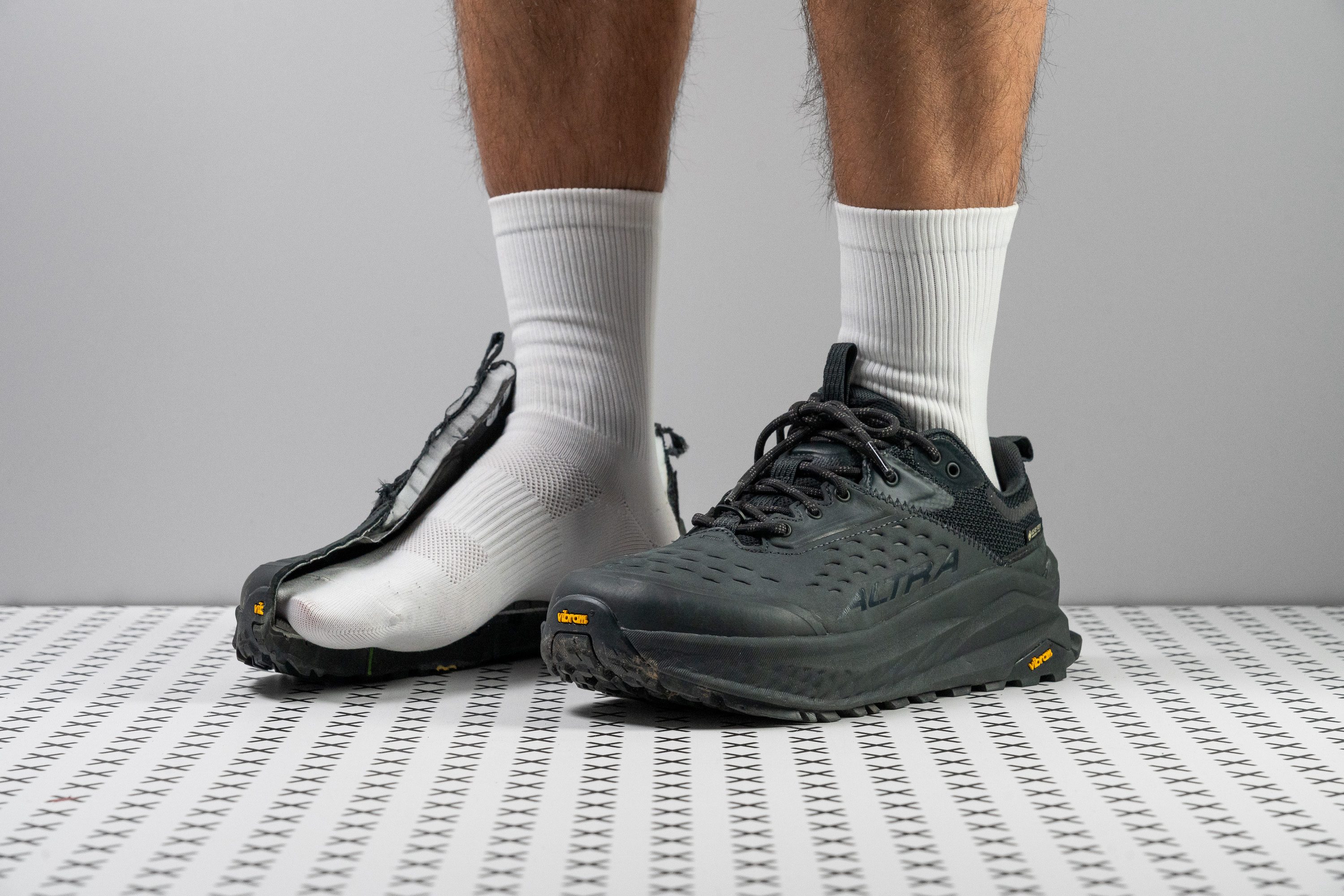
















































What makes it the best?
The Altra Olympus 6 Hike Low GTX is generous in all forms, from its broader silhouette to its underfoot protection. Lab results confirm its lasting comfort through its extra room and cushioning, with a stable ride that allows us to wander the trails with our minds turned off. Ultimately, it’s our best day hiking shoe with a wide toebox.
The shoe claims to feature Altra’s extra-wide Original FootShape Fit, so we created a gel mould replica to confirm. At the widest section, we measured a mindblowing 99.9 mm, 5.8 mm above average, offering breathing room even to those with bunions and swollen feet.
Even the base itself is expansive at 117.2/101.3 mm vs. the 111.3/87.9 mm average, creating a more surefooted ride. The midsole offers maximum torsional rigidity, proven by its 5/5 rating in our assessment, telling us we won’t have to deal with ankle twists.
Our feet felt shielded from underfoot debris and harsh impact. The forefoot has tonnes of cushioning at 29.5 mm, while the more moderate 31.0 mm heel offers deep shock absorption with its 118 SA score.
With all its bulk, this shoe might be overkill for light hikes, especially in the summer. Those seeking an agile and natural sensation won’t find that here.
Pros
- Excellent shock absorption
- Comfortably soft cushioning
- Ultra padded and cosy step-in feel
- Exceptionally wide fit and footshaped toebox
- Extra wide and stable platform
- Highly durable leather and outsole
- Excellent grip on smooth and wet rocks
- Solid waterproofing
Cons
- Not a true zero-drop (1.5 mm)
- Midsole gets notably firmer in cold
- Frail inner lining
Best lightweight day hiking shoes
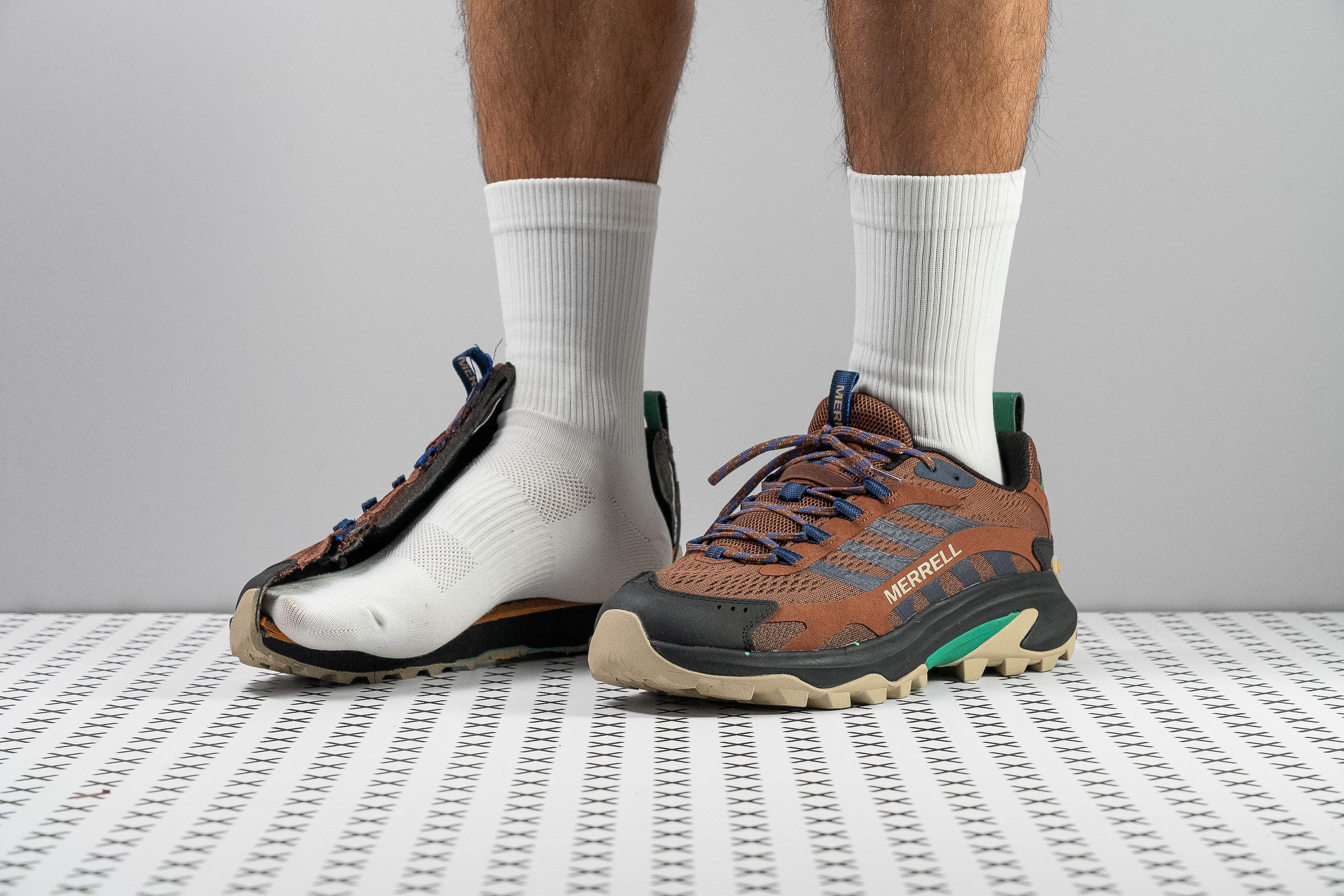























































What makes it the best?
During our hikes with the Merrell Moab Speed 2, it quickly became apparent that this shoe is extremely light and agile, with a breathable upper as the cherry on top of the easy, breezy experience. Add plush cushioning and stability to the equation, Moab Speed 2 quickly (true to its name) leads the lightweight day hiking category.
Our lab results reinforced its weightlessness, revealing an impressive 11.6 oz (329g) build compared to the 13.4 oz (379g) average—a notable 13.4% difference. It’s our go-to for travelling far and fast since our feet don’t tyre easily.
Adding to its lightness is the breathable mesh upper that gives a nice and refreshing ride even during warm days. Our smoke test confirms air will easily pass through with its impressive 4/5 score.
Surprisingly, the reduced weight didn’t compromise cushioning. With a substantial 38.8 mm heel stack, this shoe provided exceptional comfort on all-day hikes while maintaining surefooted stability. Our cut-in-half shoe reveals why: a stiff FlexPlate creates a more stable and balanced hiking experience, conserving leg energy. Our manual test showed high resistance to twisting, earning a perfect 5/5 torsional rigidity score.
However, to maximise the shoe’s lifespan, we recommend sticking to off-road surfaces and trails. The meaty 3.7 mm lugs are designed for traction on natural terrain and tend to wear faster on concrete and asphalt.
Pros
- One of the lightest hiking shoes
- Plush and abundant cushioning
- Great support and stability
- Perfect grip for moderate terrain
- Excellent durability
- Breathable for summer
- Cosy step-in feel
- Two loops for easy on-off
Cons
- Frail inner lining
- Small debris gets inside
Best shoes for easy day hikes
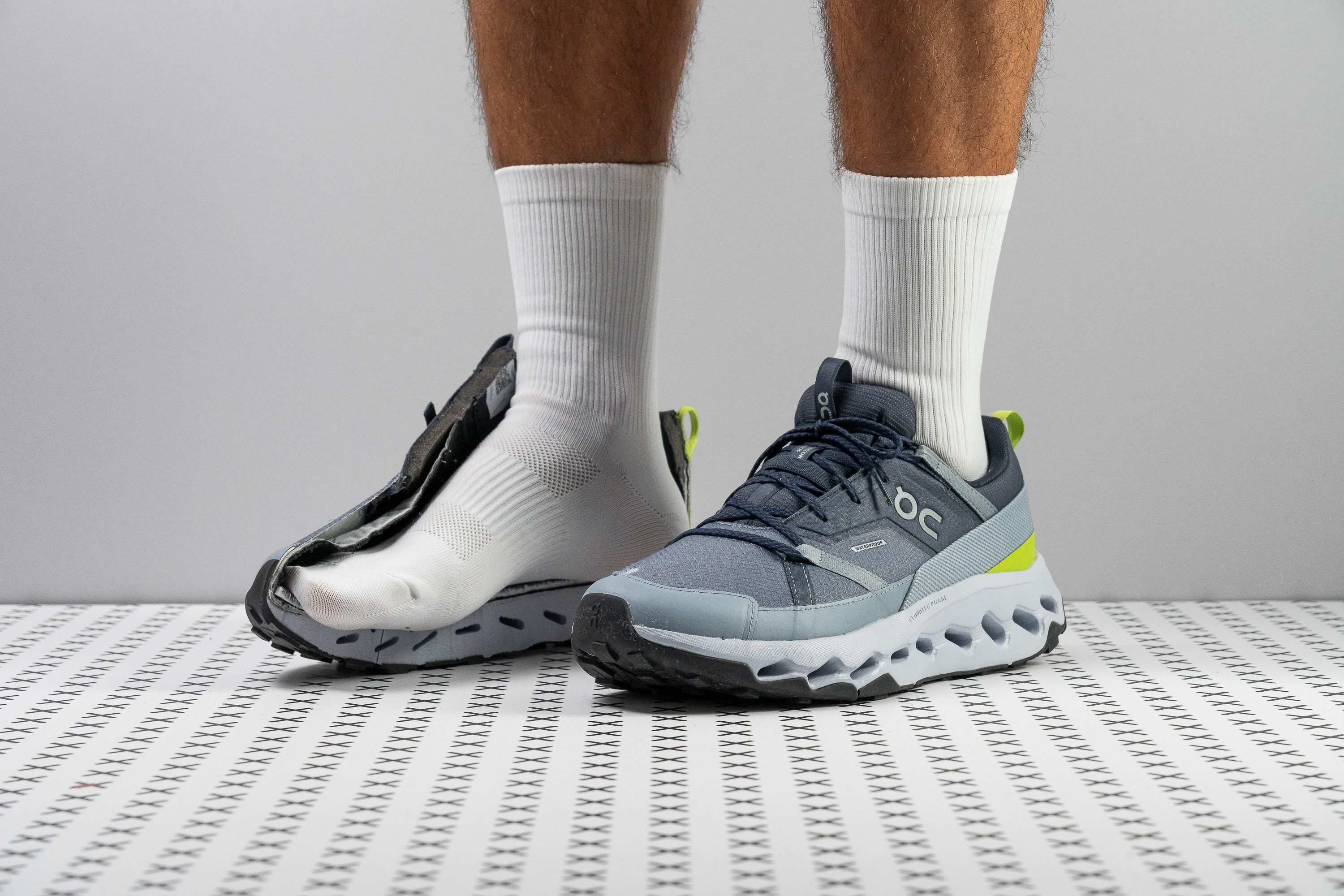





















































What makes it the best?
The On Cloudhorizon Waterproof is a wanderer’s dream for easy day hikes. Our lab results verify that it offers a safe space through its weatherproof upper, lasting comfort through its cloud-like cushioning, and a stable and responsive ride that makes the miles melt away.
Offering supreme comfort is its humongous 39.4/29.2 mm stack, keeping us isolated from underfoot hazards and ground feel. It delivers shock absorption and relief, proven by its high 126 SA rating, reducing the stress on our joints and muscles.
Despite its height, we felt sure-footed even as we carried heavy backpacks. The base extends its width to 116.3/89.1 mm to secure our footing. Plus, it resists ankle twists, proven by its 4/5 torsional rigidity score in our assessment.
Even during sudden downpour or temperature drops, our feet remained comfortably dry and warm. Confirming its airtight nature, the smoke we pumped into the shoe couldn’t escape, earning the shoe the minimum 1/5 breathability rating.
However, despite its broad midsole, the toebox runs quite narrow, making it less suitable for hikers with broad or square-shaped feet.
Pros
- Effective waterproofing
- Abundant cushioning and impact protection
- Lively and responsive ride
- Amazingly light for its stack and waterproofing
- Great as a city-to-trail shoe
- Good stability for moderate terrain
- Comfortable in-shoe feel
- True to size and fit
Cons
- Not for serious hiking
- Lacks durabiity for the price
Best budget day hiking shoes
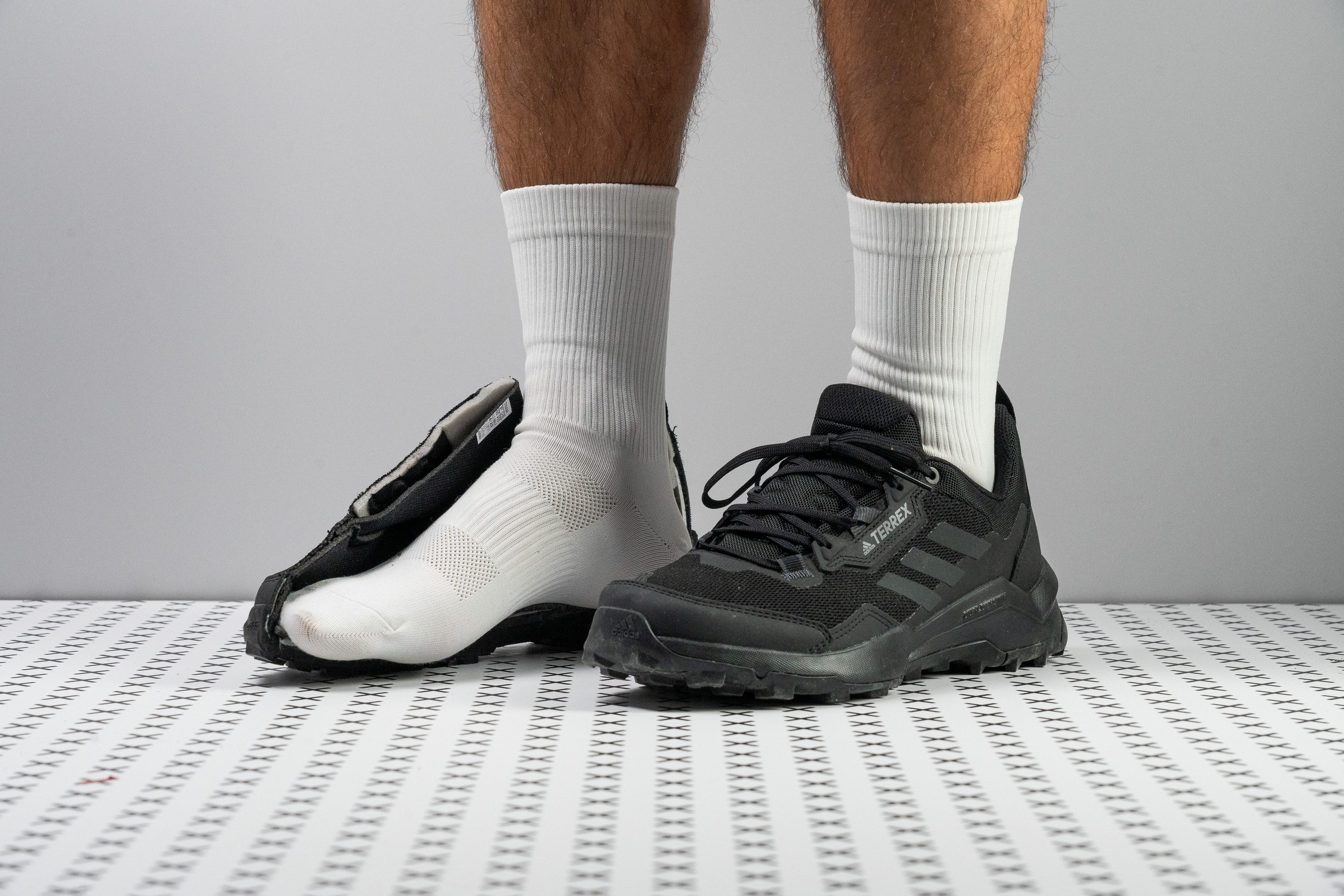







































What makes it the best?
This is the best budget hiking shoe because: it retails at only £90, it's perfect for day hikes thanks to its light weight, fun ride, and awesome grip, and it even includes some sustainable elements!
Looking at the average price of hiking shoes, which sits at £130, it turns out that the Adidas Terrex AX4 is 30% cheaper. What's not to love here? Certainly not its cushioning. We cut the shoe in half in our lab and used a durometer to assess its softness. We learned that it's actually 21% firmer than the average! That sounds like a lot, but what we actually felt was comfort and slight firmness, but in a good way. The stable way, not anything similar to the brick. It actually felt bouncy, which our energy return test verifies with an impressive 54.4% score!
This firmness, combined with the base that's wider than the average, allowed us to cover some challenging, even technical terrain with no hints of instability. What also helped, of course, is the superb grip. Although our calliper measurements showed that the lugs are 0.5 mm shorter than the average, we have nothing but praise for how they bit into the surface. Any kind: wet, dry, hard-packed, loose, gravel.
We'd really love it if this shoe were a bit more protective, at least around the toes. The lack of the toe bumper did not stop us from hiking through the bushes and over rocky terrain, but we can't say that it felt the safest there.
Pros
- Excellent value for money
- Feels like a trail running shoe
- Breathable
- Water-repellent
- Excellent grip
- Durable for the price
- Stable platform
- Contains recycled materials
Cons
- Lacks toe protection
- Flimsy insole
- Aggressively tapered toebox
Ideal scenario for getting day hiking shoes
Day hiking shoes are best used on day hikes (though). Those can vary, from very short and easy hikes on popular and maybe even kid-friendly trails to pushing for a day-long hike on a rather demanding terrain. That's why, most often, they are very versatile.
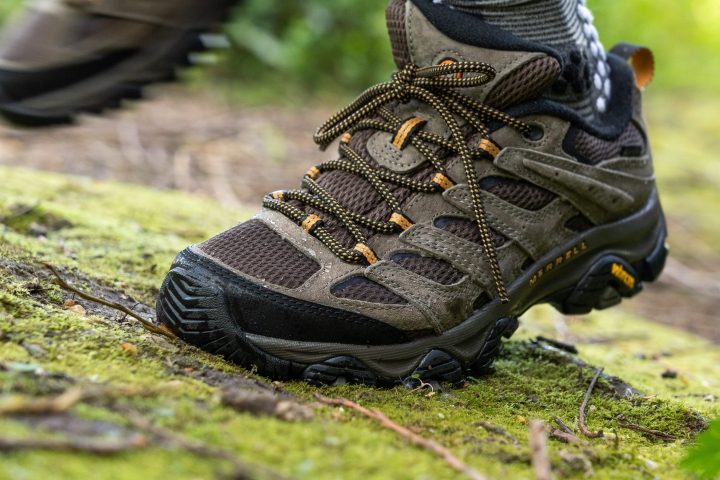
Day hiking shoes overlap a lot with other categories, which means that among day hiking shoes, you can find shoes that are waterproof, lightweight, great for snow or summer, etc. What day hiking shoes are most different from are extra stable and supportive backpacking shoes made for multi-day hikes. And light-hiking shoes which are, most often, beginner-friendly and made only for the shortest and easiest hikes (think 2-3 hours tops).
We wear-test and lab-test all hiking shoes that we purchase so, when it comes to day hiking shoes, we recommend taking these things into account:
- Overall fit - especially the width of the toebox.
- The terrain you plan to cover. Which shoe features depend on it? Lug depth and stability features (stiffness of the shoe, width of the base, heel counter stiffness). Smaller lugs for harder, flat surfaces, more stable shoes for uneven terrain.
- Weight of your backpack - if carrying a heavy backpack, it’s best to look for a very stable day hiking shoe.
- Season - the upper can be very breathable and summer-friendly, it can be very non-breathable and winter-friendly, and it can be laminated with special waterproof membranes in case you’re hiking in rainy weather. Wet weather also impacts the terrain and, therefore, grip.
We will explain all of these aspects below.
When NOT to get day hiking shoes
We recommend getting backpacking hiking shoes or backpacking hiking boots when you plan to do a multi-day hike and carry a heavy backpack.
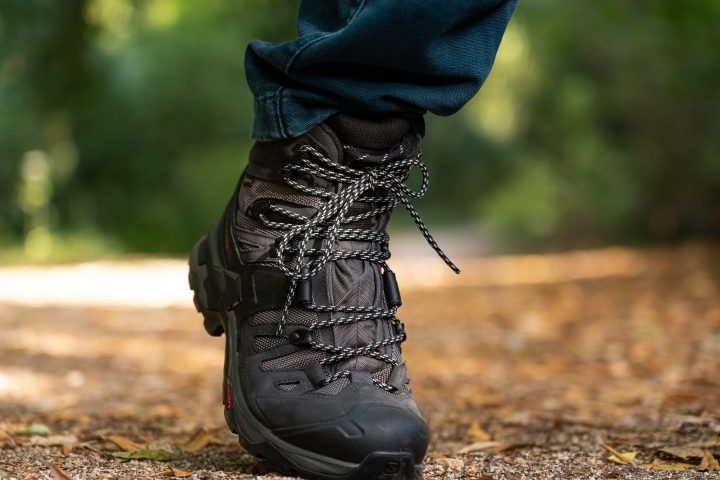
Also, if you’re just a beginner and plan to do very short hikes on perfectly maintained trails, then consider getting light hiking shoes.
Prioritise comfort above everything else!
Blisters, painful toes, bleeding nails, all of them can ruin a hike completely. That’s why it’s important to make sure the day hiking shoe fits perfectly.
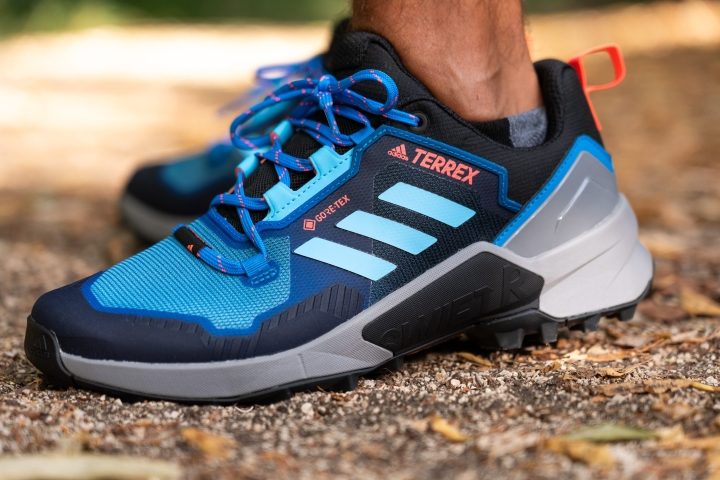
When shopping for day hiking shoes, we recommend that you:
- Do that later in the day: evening or afternoon. It’s when our feet naturally swell, similar to how they swell on hikes.
- Bring hiking socks that you usually use and insoles/orthotics with you. It’s important to use everything you’d usually use on a hike.
- Try the shoes on and see if there are any pressure points. General advice is to push the foot forward in the shoe and see if your 1 finger can fit behind the heel inside the shoe.
- Test the shoes on the ramp in the store, walk up and down. It’s important to sense whether your heel is slipping or your feet sliding inside the shoe. Hint: that should not happen.
Even when all of these steps are followed, the shoe might need some time to be completely broken in for perfect comfort. The breaking-in period varies and there’s simply no rule about it.
Many hikers directly relate comfort to the softness of the shoe (midsole, footbed). Fortunately, we check that out in the lab. Using a shore A durometer, we measure the softness of the midsole. The higher the number, the firmer the footbed.
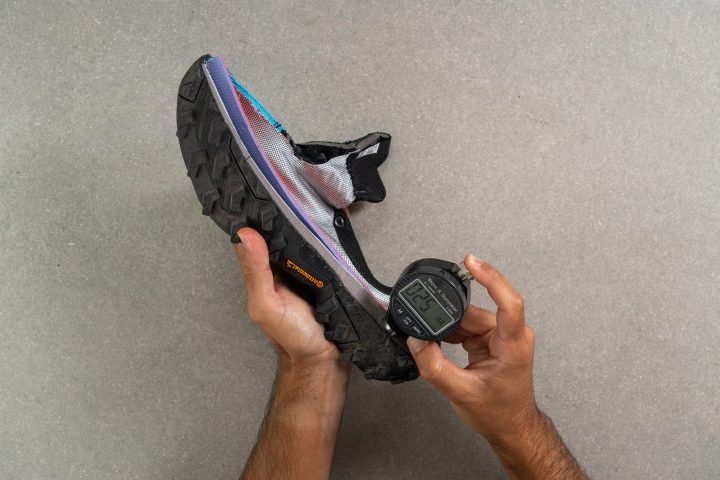
Keep in mind that, sometimes, a thick and soft insole can improve the overall feel of the hiking shoe.
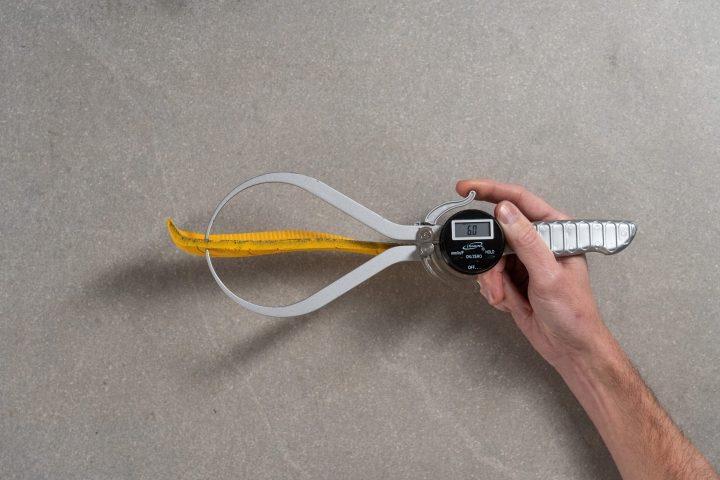
But, we don't stop there! We actually prioritise shock absorption. While the durometer can tell us how soft the midsole is, it does not tell us how protective it is. For this, we use a specialised machine and follow the ASTM F1976 13 methodology.
Higher shock absorption means that the midsole is absorbing more forces at the landing and vice versa; lower numbers indicate that it's the hiker's legs that will deal with more stress. That's why we recommend looking for hiking shoes with good shock absorption, especially if you're a heavier hiker or you plan to wear a heavy backpack.
Breathability tests: summer or winter day hiking shoes
The season dictates breathability. In summer, we recommend hiking in shoes that are breathable (they scored 3, 4 or 5/5 on our breathability test). In winter, we recommend warm shoes. They are non-breathable shoes that scored 1 or 2 out of 5 on our breathability test.
How do we test the breathability? In our lab, we simply use a smoke machine to pump the smoke into the shoe and then watch where the smoke comes out and at which pace. Based on this, we rate the breathability on a 1-5 scale, where 1 is the least breathable.
This video is a perfect example of breathability in summer vs. winter shoes:
Not just that, but we also check the upper under the microscope. This allows us to understand better why the shoe breathes or not breathes.
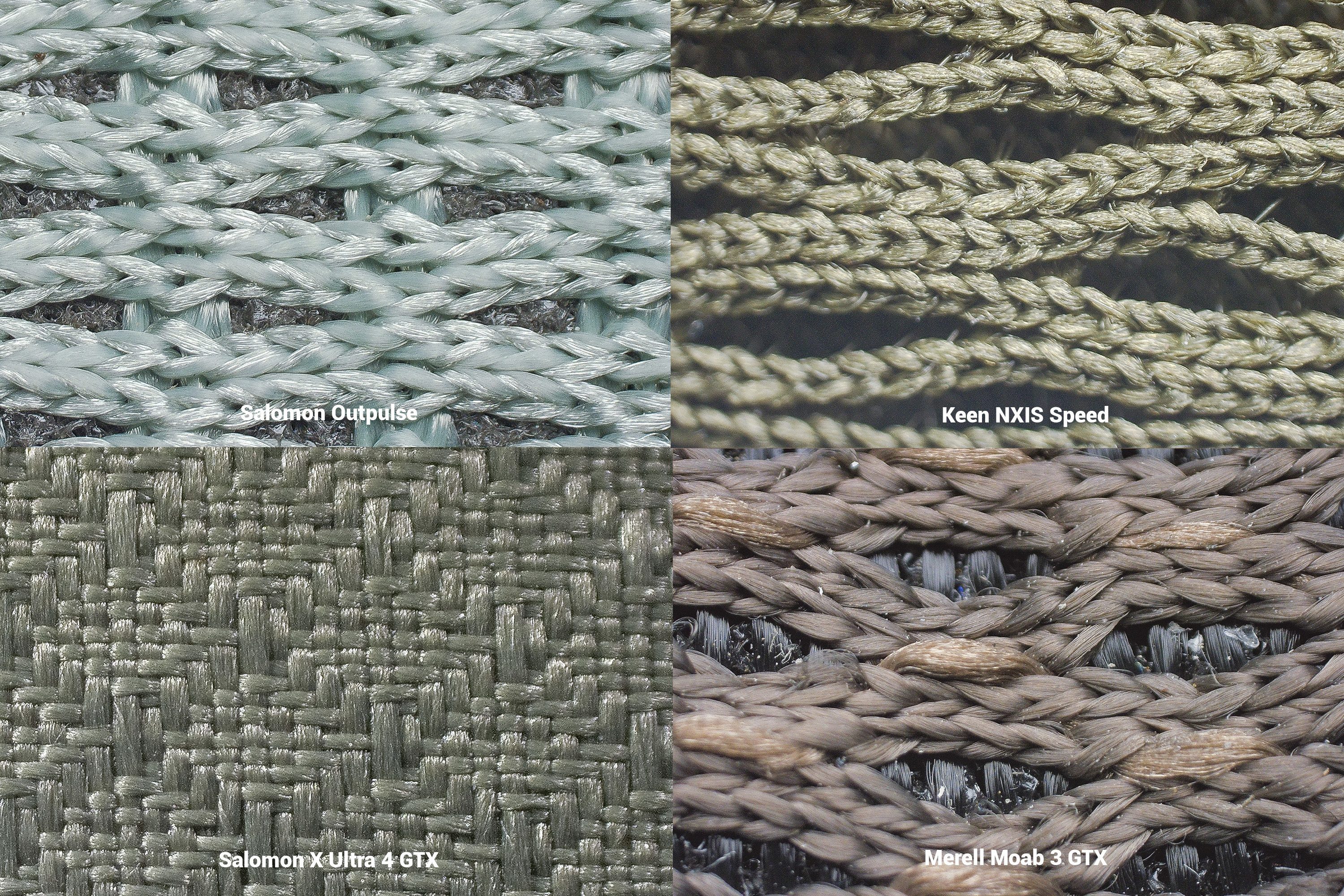
It’s clear how less breathable shoes have fibres that are very tightly woven, while breathable hiking shoes have uppers with more loose fibres.
Lugs size: make the right decision
It’s very important to know what type of terrain you plan to hike on. Here are our general guidelines:
- Choose shallow lugs (less than 4 mm) if you plan to hike on hard-pack and well-maintained trails. Shallower lugs are also great for hard flat surfaces like rock.
- Deep lugs (more than 4 mm) are used on loose, usually wet terrain, like slush or snow. They are also a must for mud but mud outsoles have lugs that are more distanced apart.
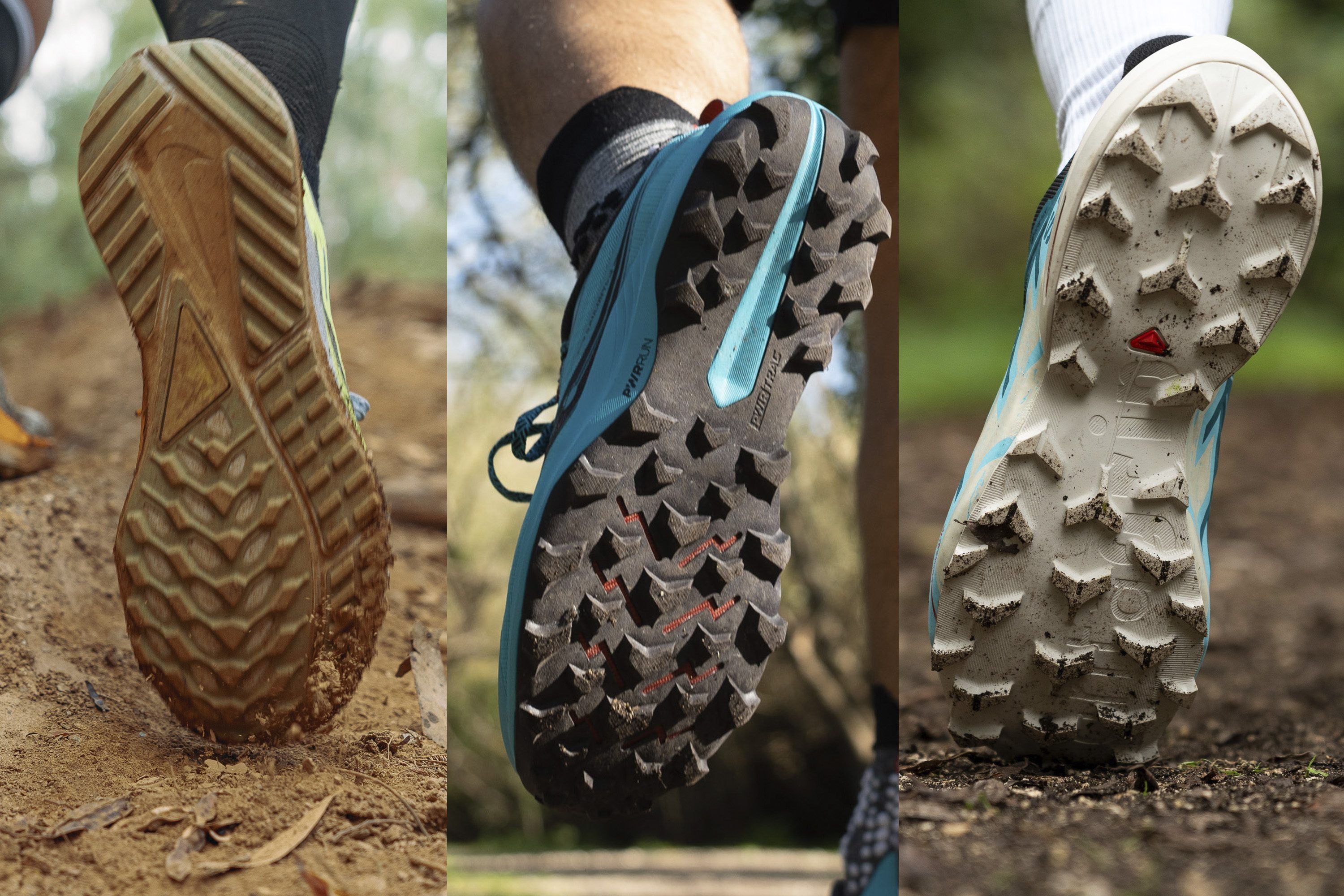
When testing shoes in our lab, we measure the thickness of lugs with a calliper. That’s why you can always check the shoe review and find out if the depth of the lugs works for your intended hike.
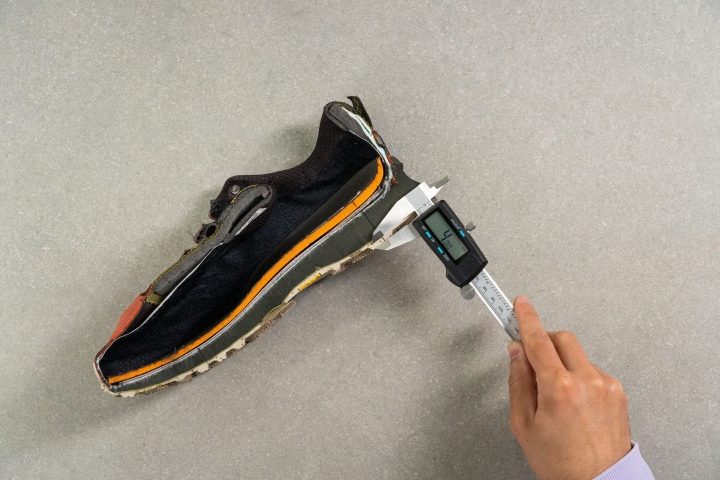
When it comes to grip, the hardness of the rubber also plays a role. Softer rubber is grippier, stickier, and more flexible. But, harder rubber offers more protection for the feet and is more durable. We also measure the hardness of the rubber on every shoe we test.
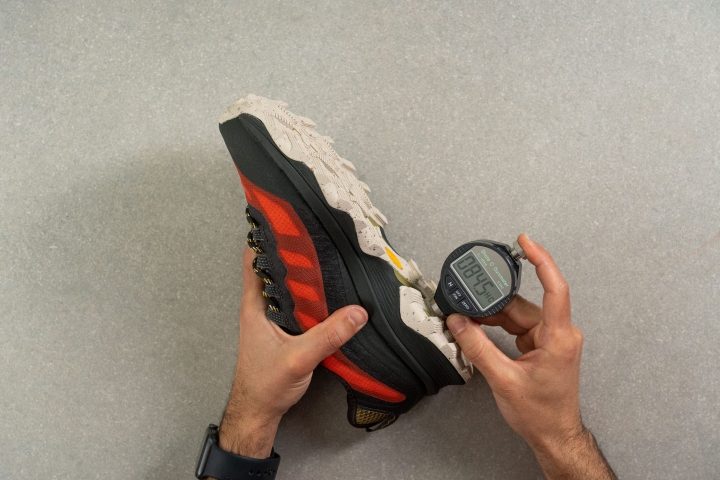
How to look for stability in day hiking shoes
Stability is especially important when you plan to hike on uneven terrain. Stability is directly related to the width of the base.
When lab testing the shoes in our lab, we use a calliper to measure the width of the midsole (the base of the shoe) at the forefoot and at the heel.

The wider the base, the more stable the hiking shoe is.
When it comes to lateral stability, we pay attention to it when wear-testing the shoes and always comment on it in the reviews.
Less weight for less foot fatigue in day hiking shoes
Weight plays a significant role in hiking. While heavier shoes usually offer more protection and stability, they can also wear you down and they can feel bottom-heavy. Because of this, make sure to understand what type of hike you plan to do and whether you can go for lighter hiking shoes.
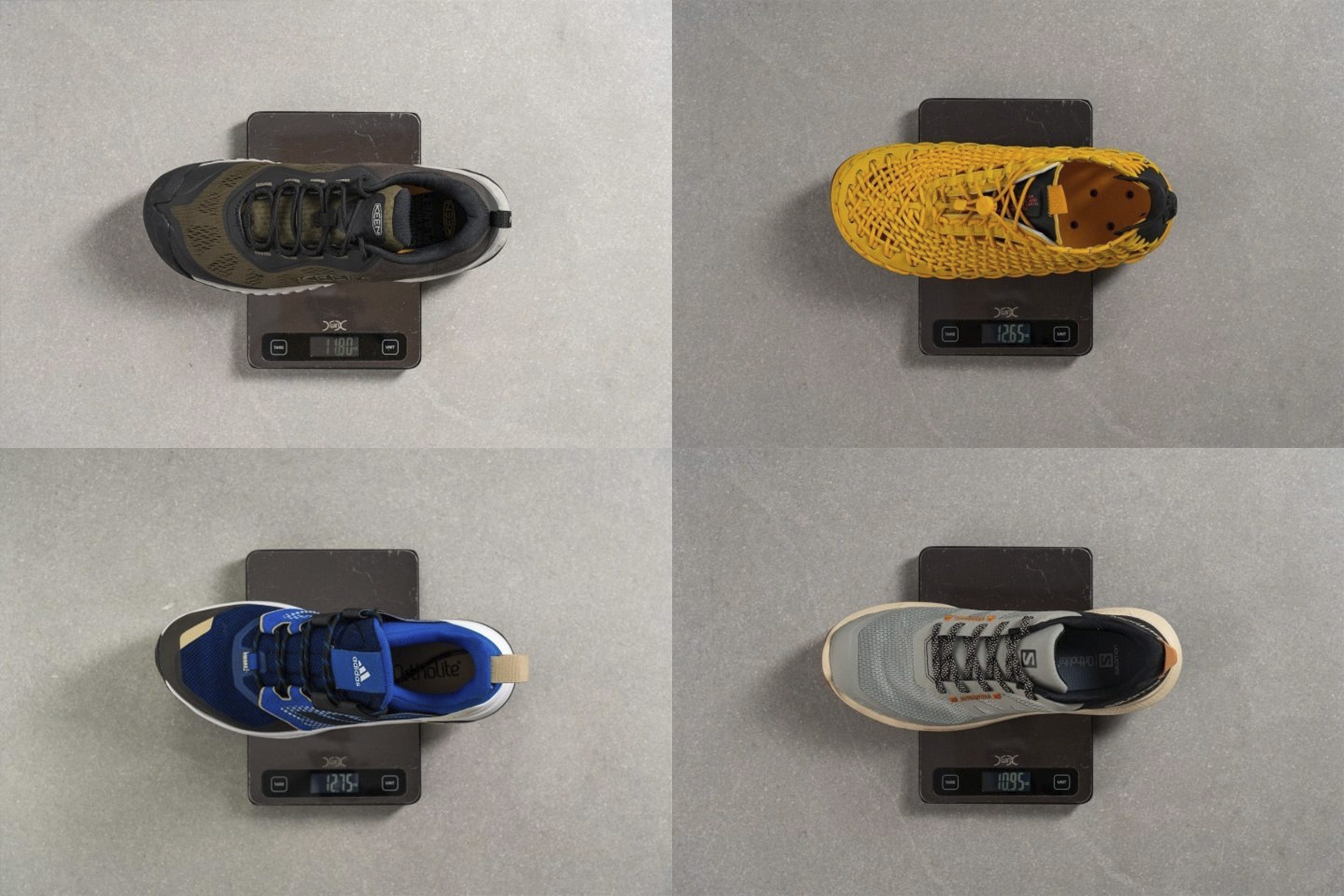
Things that make shoes heavier: waterproof membranes, stability elements (harder overlays on the upper), protective elements (hard rubber toe bumper, thick hard outsoles), upper material type (leather is heavier than mesh), etc.
Waterproof day hiking shoes
Wet weather asks for waterproof hiking shoes. You can recognise waterproof day hiking shoes by looking for “waterproof” sing on the upper or “Gore-Tex” logo. Gore-Tex is the most popular waterproof membrane but it is not the only one.

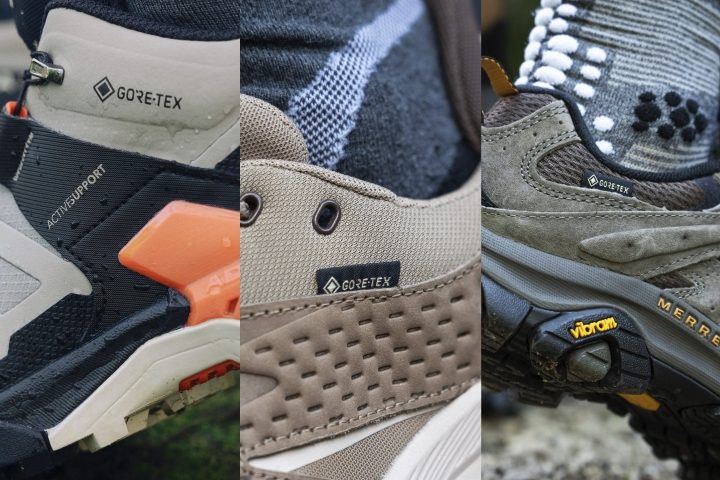
The most important thing you should know about them is that they are not breathable, contrary to what the manufacturer says.
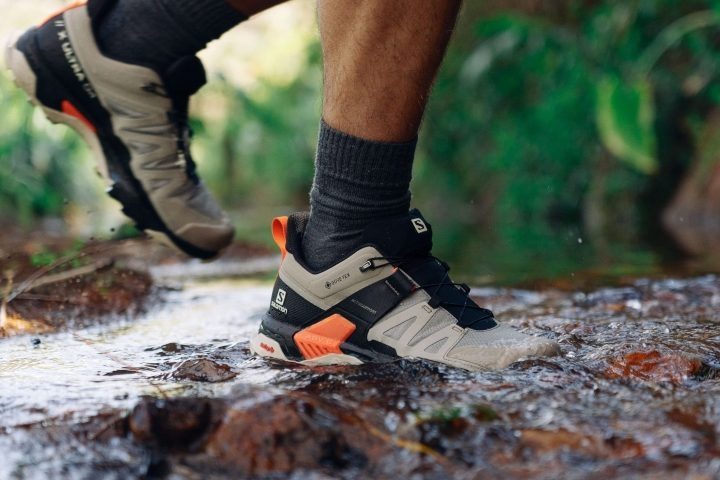
We bought a smoke machine to test for this: we pump the smoke into the shoe and they watch closely. We note down a) where the smoke comes out and b) at which pace. Based on this, we rate the breathability of shoes on a 1-5 scale, where 1 is the least breathable.
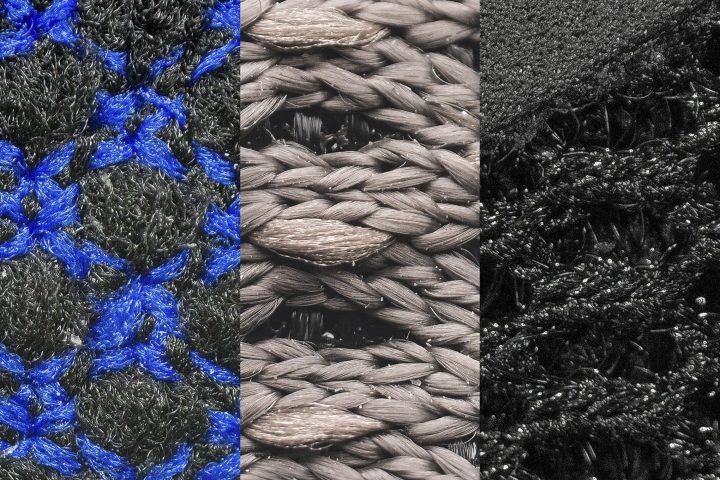
We don’t stop there. We also examine both waterproof and non-waterproof uppers under the microscope. This allowed us to understand why waterproof hiking shoes are not so breathable, their fibres are very tight and/or overlapping. Unlike the non-waterproof uppers that have a more loose structure.
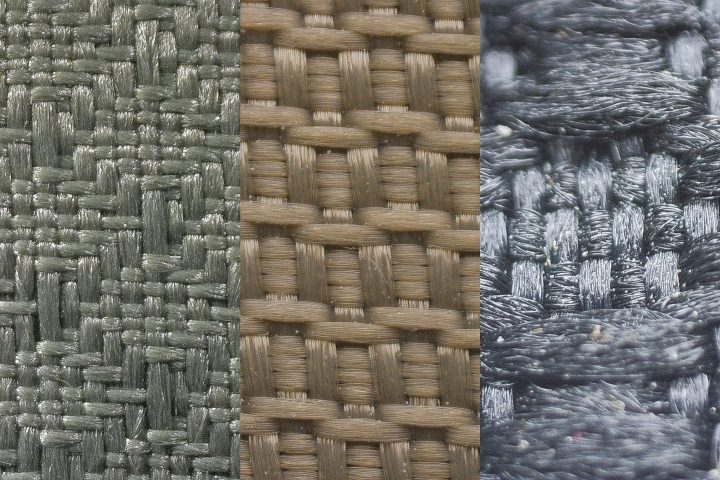
Keep in mind that you might also be OK with a water-repellent or water-resistant upper. Here’s how they differ:
| Water-resistant | Water-repellent | Waterproof | |
| General characteristics | a tightly woven fabric that is naturally capable of resisting water upon contact | fabric treated with durable water-repellent (DWR) or hydrophobic chemicals | -fabric treated with DWR -have waterproofing membranes like Gore-Tex and OutDry -have seam-sealed construction for extra protection |
| Water protection level | low water protection | moderate water protection | high water protection |
| Water pressure resistance | 0-5000 mm (no pressure or moisture) | 6000-10000 mm (light pressure) | 10000-20000 mm (high to very high pressure) |
| Weather conditions best used in | light rain shower and dry snow | light rain and average snow | moderate to heavy rain and average to wet snow |
And, if you’re really geeky about waterproofness, we suggest understanding the nuances when it comes to how waterproof a waterproof material actually is.
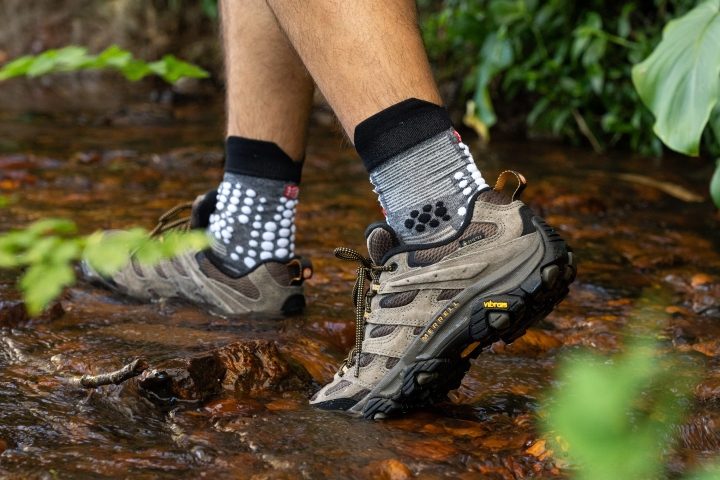
The measure here is called hydrostatic head. It basically tells us how many millimetres of water a 1’’x1’’ tube can take before water begins to leak through the material. More millimetres, more waterproofness.

We have covered waterproof hiking shoes in great detail in this guide. And, if you want Gore-Tex and no other membrane, consider reading our guide on the best GTX hiking shoes.
Best socks for day hiking
We always recommend wool socks or bamboo socks. Wool is durable, breathable, keeps you warm when it's cold and breezy when it's hot. It also wicks the moisture away and keeps the feet odour-free.

If you're prone to blisters, next to making sure you got the right fit for you, we recommend giving compressive socks a try.

